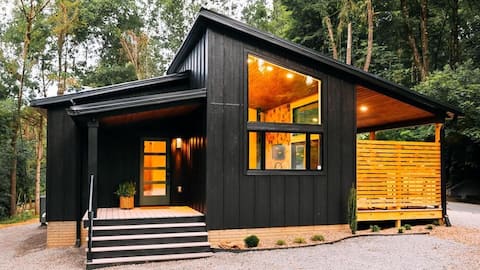Gen Z, millennials turn homeowners with Amazon's $30K tiny homes
What's the story
In a real estate landscape marked by exorbitant prices, steep interest rates, and overwhelming student loan burdens, millennials and Gen Z are reshaping the trajectory to homeownership. The game-changer? Amazon's tiny homes are priced as low as $30,000. These unconventional choices are revolutionizing the housing aspirations of the younger generations in the US, presenting an alternative to the challenges posed by traditional homeownership.
Home trend
Amazon home trend
Social media influencers, like lifestyle content creator Jeffrey Bryant and YouTuber Nathan Graham, have propelled the tiny home movement. Bryant's impulse purchase of a 330-square-foot haven, financed through inheritance, went viral on TikTok. Graham's DIY home assembly, documented on YouTube, garnered over 20 million views, sparking discussions on accessibility, practicality, and the affordability of this unique homeownership approach.
Tiny homes
Why the hype
Tiny homes, compact and fully functional, range from 100 to 400 square feet. These minimalist havens prioritize efficiency with clever storage and multi-functional furniture. Some arrive folded, unfolding to reveal cozy living spaces. Assembling these dwellings becomes part of the experience, contributing to the sense of ownership. Popular for affordability and mobility, they offer a clutter-free, downsized life in a uniquely personalized space.
The boom
The #AmazonHome community boom on TikTok
Under the TikTok hashtag #AmazonHome, a burgeoning community of over 88,000 contributors shares experiences of purchasing and assembling these budget-friendly dwellings. This digital cohort signifies a broader cultural shift in housing preferences, emphasizing sustainability and cost-effectiveness. The unconventional allure of tiny homes is disrupting the traditional ideals of homeownership, resonating strongly with the tech-savvy younger demographic.
Big living
Tiny homes, big impact: A sustainable housing future
As the Amazon tiny home trend gains momentum, it heralds a new era of mindful homeownership. Beyond being budget-friendly, these homes are compact, energy-efficient, and environmentally conscious. The shift away from oversized suburban residences towards minimalist living represents not only a pragmatic choice but also a commitment to a sustainable and economically viable housing future for millennials and Gen Z.
Barriers
Accessibility and financing
Despite the initial allure, challenges remain in making tiny homes accessible to a wider demographic. Issues such as zoning regulations, financing options, and land availability pose hurdles for prospective buyers. However, innovative financing models and increased advocacy for tiny home communities offer potential solutions, paving the way for greater inclusivity and accessibility in the tiny home movement.
